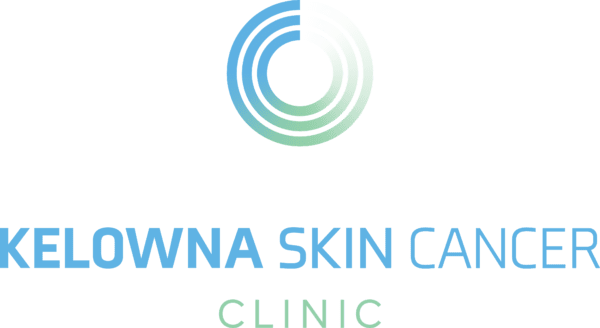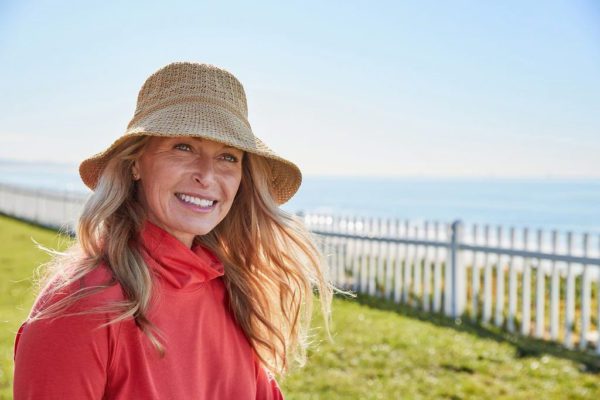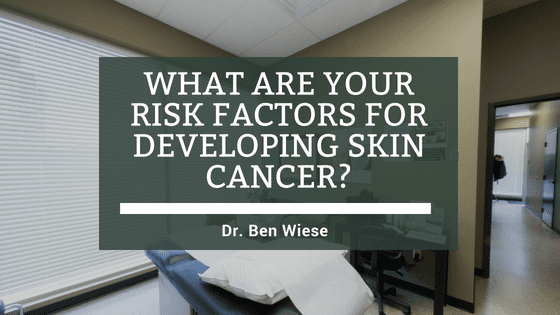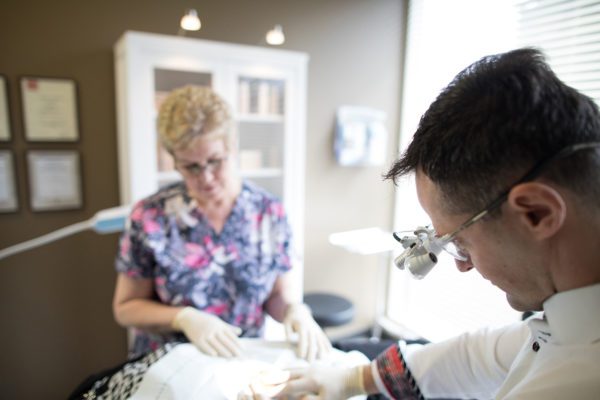With early detection, skin cancer is one of the most treatable cancers we face. According to the Skin Cancer Foundation, the estimated five-year survival rate for patients whose melanoma is detected early is around 99 percent.
Following treatment, patients in remission must take extra care to protect their skin from new sun damage. People who have had skin cancer are at greater risk for developing another skin cancer, so how do you make sure you’re protected with proper skin cancer sun care?
At Kelowna Skin Cancer Clinic, that’s exactly our goal.
In this blog post, we’ll go over the best skin cancer sun care ways to protect yourself and be proactive against it coming back in the same or different form. We’ll cover how to monitor changes in your skin and highlight some sun care products that provide the best defence. Let’s get started!
Perform a Self-Exam
The first step in skin cancer prevention is learning the warning signs and checking your skin regularly to detect any abnormalities. By spotting things early, you can catch cancer before it spreads and treat it more easily.
Most doctors recommend that you check your skin at least once a month. To do so, stand in front of a full-length mirror in a well-lit room and use a handheld mirror to inspect hard-to-see areas. When checking your skin, be sure to follow the “ABCDE” rule for spotting Melanoma, the most common form of skin cancer:
- Asymmetry – are there differences in a mole or birthmark?
- Border – are the edges rough, irregular, notched, or blurred?
- Colour – is the colouration inconsistent? You may see shades of brown or black and occasionally patches of red, pink, white, or blue.
- Diameter – are there any marks greater than ¼ inch in diameter (about the size of a pencil’s eraser)?
- Evolving – are there any marks changing in size, shape, or colour?
For a complete guide on what to look for, follow the instructions provided by the American Cancer Society. Different cancers may have different warning signs associated with them. If you notice anything unusual, book an appointment with a skin care physician for a professional opinion.

Establish a Baseline
Sometimes noticing changes that happen over time can be difficult. For self-screenings, we highly encourage patients to take photos for reference, or have a loved one take them for you. This is the easiest way to self-monitor changes or irregularities.
Be Vigilant in Sun Protection
For the average person, sunscreen is the first and only defence that comes to mind when considering post-skin cancer sun care protection. While this is a great place to start, it leaves room for error in application and re-application. For whole body protection, your best defence is wearing a combination of sunscreen and UV protective clothing.

UPF vs. SPF
Before we dive into these products, It’s important to note that UPF and SPF ratings are not the same. Sun Protection Factor (SPF) is a skin-specific rating. It indicates the amount of time it takes for sun-exposed skin to redden or burn, measuring the sunscreen’s ability to filter UVB rays. Ultraviolet Protection Factor (UPF), on the other hand, is a fabric-specific rating. UPF measures a fabric’s ability to filter UVA and UVB rays.
For sunscreens, we recommend a SPF 30 or higher. For fabrics, UPF 50+ is the gold standard.
Sun protective clothing
While you might think your clothing is already protecting you from the sun, not all fabrics and fits are made equal. The most obvious way to measure a product’s effectiveness is to check its UPF rating. If there is no rating, it’s safe to assume you are not getting the optimal sun protection.
When shopping, look for products with a rating of UPF 50+ to provide long-term protection against the sun. But what items do you truly need?
The UV protective clothing you decide to add to your closet will depend heavily on your lifestyle. Thanks to modern technologies, you can find UV protection in a wide range of clothing styles and no longer is restricted to just beachwear. Regardless of the activity, here are a few things to keep in mind while shopping.
- Coverage – choose something with the most coverage possible in order to maximize your protection. Long sleeves can be a great choice even in the summertime thanks to the light and breathable materials found in many of these products.
- Fit – in the majority of cases, loose-fitting clothes are preferable to tight ones. These allow for better airflow and protection, while also minimizing the possibility of stretching over time. In some instances, such as during water sports or other physical activities, tight-fitting clothes may be preferred for comfort.
- UPF Rating – This number will tell you exactly how effective any particular garment is at blocking out the sun’s harmful rays.
- Colour – Contrary to popular belief, dark or bright colours are preferred to light tones when choosing clothing; this is because dark and bright colours do a better job of blocking UV rays.

How to choose a sunscreen
The first thing to consider while shopping for sunscreen is whether you’d like to use a chemical or mineral product. While they’re both great for skin cancer sun care and protect from the sun’s harmful rays, they do so in different ways. There are pros and cons to consider for each, but it’s important to note that both have been deemed safe by the FDA.
Mineral Sunscreens
The primary ingredients in mineral sunscreens are zinc oxide and titanium dioxide. These minerals sit on top of the skin and act as a physical barrier to prevent UV rays from penetrating the skin.
Mineral sunscreens are commonly known by the visible layer they leave on the skin. With advancements in formulas, companies such as Colorescience are offering products that blend easily. This gives you the same protection and qualities of traditional mineral sunscreen, without the unwanted white tint.
Chemical Sunscreens
Chemical sunscreens get a bad rap, but don’t let their name scare you. You don’t have to worry about harmful chemicals when you choose the right products. The FDA has approved certain chemical actives that have been deemed reef-friendly and human-safe.
Unlike mineral sunscreens, chemical sunscreens need 20-30 minutes after their application to be effective. This is because the skin needs time to fully absorb the sunscreen, which helps give it a weightless feel and minimizes any greasy feel. Water- and sweat-resistant formulas are often chemical based.
Broad Spectrum Formulas
When shopping for sunscreen, always look for a full-spectrum or broad-spectrum formula. Sunscreens with this label can be mineral or chemical, but will protect against UVA and UVB rays. All sunscreen products protect against UVB rays, which are the main cause of sunburn and skin cancers. But UVA rays also contribute to skin cancer and premature ageing. Only products that pass a certain test can be labelled “broad spectrum.”
How to Properly Use Sunscreen
While sunscreen can effectively protect your skin from sun damage, we know that most people don’t use it correctly. For full protection:
- Apply frequently – most recommend reapplying every 2 hours, but read the label for more information.
- Apply abundantly – the Skin Cancer Foundation recommends a shot-glass size amount for the face and body.
- Use an adequate SPF – dermatologists recommend an SPF 30 or higher.
- Apply 15-30 minutes before entering the sun – read the label to be sure, as some formulas need more time to absorb.
- Apply on all exposed skin – common places people miss are the eyelids, lips, ears, scalp and the feet; using a combination of sunscreen and UPF clothing is your best bet for staying fully covered.

Our Sun Smart Mission
At Kelowna Skin Cancer Clinic, we’re dedicated to creating a more informed and proactive population. We envision a Canada where families can safely and confidently go outdoors and experience all the majesty that this country has to offer.
The clinic was founded by Drs. Ben and Lize Wiese. As skincare physicians, they diagnose, treat and educate the public on ways to prevent skin cancer. Following treatments, they help to put patients minds at ease and return to a sense of normalcy. They know first-hand how important it is to be equipped with the right tools and knowledge to prevent new cancers.
For advice or prevention services after treatment, reach out today!




